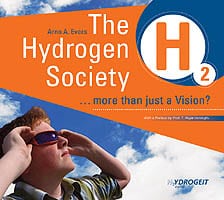
by Sven Jösting | Apr 18, 2024 | Development, Energy storage, Fuel cells, hydrogen development, international, News, Stock market
The Plug share price fell quickly to under 3 USD (2.50 USD at low) and then rose again to over 4 USD. At a price of less than 3 USD, it was possible to build up excellent trading positions (see H2-international Feb. 2024). Is there now a turnaround in the price trend or was this just a brief flare-up before the downward trend continues? Or will there even be an upward trend reversal?
There is a great opportunity for Plug Power to receive a credit (loan) totaling 1.6 billion USD from the US Department of Energy (DOE) as part of the Inflation Reduction Act. This is to come in the third quarter, although there are also rumors that it could be approved much earlier, but I won’t take part in this speculation. In this ideal scenario Plug will then have sufficient capital to establish and expand several production facilities, for example in Tennessee and New York, and start production there. The stock market will value this – if it happens – very positively: with higher share prices.
Advertisements

But a loan is borrowed capital that has to be repaid. What are the conditions? How high is the interest or coupon? What are the repayment arrangements? Will the loan be paid out immediately in full or in installments and with target definitions (milestones)? What is Plug doing with the money? If there is no clarity about this or the loan is not approved in the first place, then the stock market will be miffed or react in disappointment, with the consequence of falling share prices.
Parallel to this is running a share placement program (at-the-market) worth 1 billion USD. Of this, already over 305 million USD, through the placement of 77.4 million shares, have flowed into Plug’s account. This will also correlate positively with the DOE credit: If this is granted, Plug’s share price will – even if possibly only for a short time – climb, and this then enables the perfect placement of shares via ATM in the ramp-up. This money from the ATM program can be used to solve the short-term liquidity problem, since the cash on hand lay at just 135 million USD December 31, 2023.
There are also other possible difficulties, because the US Treasury Department is defining how hydrogen must be produced in order to receive the subsidy of up to 3 USD per kg. Plug is relying very heavily on this funding, but there are still questions: From which location must the regenerative energy come from, in what amount and at what point in time? And at which location must the electrolysis take place? With this are, like in the EU, a series of bureaucratic hurdles – unfortunately.
Disappointing figures
What are these figures: The turnover in fiscal year 2023 amounted to, instead of the expected 1.2 billion USD, only 891 million USD. The loss even amounted to 1.4 billion USD, which corresponds to a minus of 2.30 USD per share. The press conference on the results in March raised more questions than it answered.
For example, the material inventory is to be reduced by a value of 700 million USD via the delivery of finished products to customers. Whereas in 2023 only 400 million USD was invested in this area, no more capital is to flow into here in 2024.
The production at locations such as Georgia, Tennessee and Louisiana is to be ramped up and contribute to an increase in the profit margin. These sites are already capable of producing liquid hydrogen for the company itself and supplying it to customers. The Texas and New York sites will only be continued once the DOE loan has been approved, as otherwise they tie up too much liquidity.
In addition, there is to be price raisings (among others for H2, stacks and electrolyzers) and a cost-cutting program of 75 million USD. Liquid hydrogen is currently still being purchased, which entails losses, but is to be replaced by self-produced hydrogen.
After Plug Power – I reported in detail – established production facilities in the USA and internationally in a variety of ways and thus severely strained liquidity, the planned cost-cutting program amounting to 75 million USD is now to take effect. Whether this amount will be sufficient may be doubted, however, because it seems downright ridiculous in view of the Plug’s liquidity problems and comes much too late. That the company has started to produce liquid hydrogen at several locations and has delivered to customers like Amazon and Walmart is good news for now, but will at first have little influence on the company figures.
With orders for electrolyzers too has Plug scored, but it will be some time before significant sales and thus profits are visible here. That the Saudi sovereign wealth fund Public Investment Fund (PIF) at the end of 2023, with the selling of 5.67 million shares, has completely withdrawn from Plug is not a good sign.
Summary
Words must now be followed by deeds, because all too often very full-bodied forecasts have been made. That Plug will bring partners on board for some projects seems very likely. And also the spin-off (partial sale) of some units is conceivable, if liquidity cannot be adequately presented soon. However, there is currently no need for action. Plug is clearly on my watch list, though, as the company is active in the right markets at the right time. Once the financial problems have been solved, there will possibly also be changes in management, which has lost trust, and Plug will continue on its way.
Over 170 million shares sold short (short interest, status mid-February) are dubious, however, as there is massive speculation against the company or – keywords Amazon and Walmart (warrants) – a form of hedging is being used – no guarantees. All the same, already 10 million shares were short covered in January/February. On the other hand, it is this short interest that can sometimes have a price-driving effect via the covering (short squeeze) when good news is reported. Everything has two sides.
There is still no need for action, however, since the publication of the figures for the first quarter is pending. That various business media in Germany count Plug Power among their top investments in hydrogen befuddles me, though. There are more convincing H2 investments.fa
Disclaimer
Each investor must always be aware of their own risk when investing in shares and should consider a sensible risk diversification. The FC companies and shares mentioned here are small and mid cap, i.e. they are not standard stocks and their volatility is also much higher. This report is not meant to be viewed as purchase recommendations, and the author holds no liability for your actions. All information is based on publicly available sources and, as far as assessment is concerned, represents exclusively the personal opinion of the author, who focuses on medium- and long-term valuation and not on short-term profit. The author may be in possession of the shares presented here.
Author: Sven Jösting
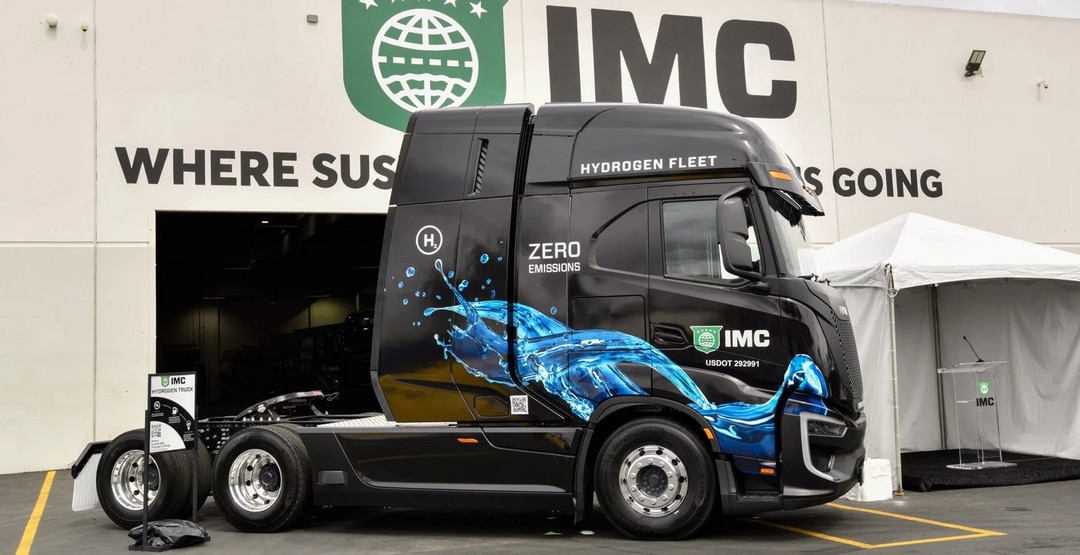
by Sven Jösting | Apr 17, 2024 | Fuel cells, News, Nikola Motors, Stock market, worldwide
The press conference in February 2024 on the fourth quarter results and the entire year 2023 and, above all, the outlook for the current fiscal year support my very optimistic assessment of this start-up. Of the 42 built Tre FCEVs, 35 were delivered in the fourth quarter. Seven are currently being tested by fleet operators. The battery-electric trucks, Tre EVs, after the problems with the batteries and their replacement in the course of the year, will return to their buyers by the end of the second quarter.
Nikola can immediately sell every built Tre FCEV, because the demand is there, but there are now not yet enough parts from suppliers. In 2024, 300 to 350 are to be sold. Strong is the position with the coupons called (California) HVIP vouchers, from which Nikola can sell almost all (99 percent, 355 out of 360) for hydrogen-powered vehicles. We’re talking about up to 408,000 USD subsidization per FC truck. With the BEVs, there were 95 vouchers by the end of January 2024.
Advertisements

Focusing on California and Canada in the initial phase is smart in view of the support programs there. In parallel, Nikola is working via its subsidiary HYLA on important locations (including port facilities in California such as LA or in Orlando, Florida) to initially supply the necessary hydrogen with the help of mobile H2 refueling stations (significantly less regulatory work than with fixed locations), to then set up fixed H2 refueling stations depending on experience and demand.
On top of that is the partnership with FirstElement Fuel, a company that already operates locations at important hubs (ports such as Orlando) and supplies 100 to 200 trucks per day with the necessary hydrogen there. Sufficient hydrogen is available in any case, according to a take from the press conference. That already includes the Tre FCEVs to be delivered and their H2 requirements. Currently in development are nine locations of their own HYLA program in addition to those of FirstElement Fuel. Altogether, over 60 H2 refueling stations will emerge there in the future.
All important positions filled – with top talent
The CFO position has now also been filled: Thomas B. Okray is the new chief financial officer. He can boast an impressive CV: Okray was CFO at companies like Eaton, but also in a leading position in the logistics division (fulfillment) at Amazon and 14 years in top positions at GM – also as CFO.
With Jonathan Pertchik, Nikola is bringing in a managing director that already been successful as CEO at TravelCenters of America. The company was acquired by BP and is one of the largest truck stop operators in the USA. Here someday, hydrogen refueling stations from Nikola could be positioned – comparable to Pilot Flying J – if it came to a cooperation (an idea).
Ole Höfelmann will be, via the subsidiary HYLA, president of Nikola Energy. Before, he was responsible for the company’s global infrastructure activities. In his career, he has held numerous management positions for 30 years at Air Liquide, among other things as CEO of Air Liquide Spain with 3,000 employees. In addition, he worked at Plug Power as head of the electrolysis division. Furthermore, he is a board member of various associations such as the California Fuel Cell Partnership.
Carla Tully completes the executive board. She has held leadership positions in Fortune 150 companies, among other things as co-founder of Earthrise Energy (over 1.5 GW of renewable energy), was on the board of the Citizens for Responsible Energy Solutions Forum and in management positions at MAP Energy (2.4 billion USD market cap) and AES Corp. Nikola can thus draw on extensive expertise in the areas of M&A, private equity and CSR. Therefore, Nikola is optimally equipped for the future in all leadership positions.
Truck in use – Customers very satisfied
Several customer reports on long-distance journeys with hydrogen-powered trucks are very positive: Coyote Container drove from the Port of Oakland to Long Beach, then to Iowa and Ontario and back to the Port of Portland – 866 miles (1,393 km) on just one tank of H2. MTA Trucks drove 519 km (322 mi) from Edmonton to Calgary and back. The tank was still 40 percent full at the end of the route – at minus ten degrees Celsius. Other examples refer to trips of over 1,000 miles in one day with a full load.
Special potential with the Badger?
Yes, you read correctly: In 2023, Ember acquired the market rights (IP, design) and prototype for this strong-looking SUV named Badger from Nikola. Nikola sold these items as part of an equity swap (exchange via contribution in kind) to Ember and received 30 percent of the company in return. No capital will flow from Nikola, as it is concentrating on the e-truck. Certain is that the Badger, as an FC/battery SUV, could give serious competition to the Cybertruck of Tesla, should it come onto the market in time. Whether Ember and other OEMs and partners will actually implement this project is, however, still unclear.
Psychologically, however, it is a strong sign that Nikola is indirectly in the boat here. It will be interesting to see. Because the Badger once served as the basis for a cooperation with GM and resulted in a two-digit billion valuation of Nikola Motors at the stock exchange. There were 6,000 pre-orders at the time. Just think of it as a nice side topic, but it could be very exciting when things get concrete here and well-known names such as Magna, Dana, GM and many others pick up the ball. Consider this: The design of such a car too, which you already have, also costs a lot of capital – not to mention that the start of production requires a lot of capital, even if there are companies (OEMs) that could ramp up existing production capacities very quickly. Then, the Badger would be on the market in just a few years. Anything is conceivable.
Summary
With over 460 million USD in free capital (unrestricted cash), the company is initially well positioned. Cost-cutting measures, optimization and normal scaling effects in production (the more trucks are built and sold, the lower the unit price and the closer the break-even point becomes) will characterize the year as a whole, where the capital use on a quarterly basis is to noticeably sink. And 400 to 450 trucks of both types are the initial sales target for 2024, with expected turnover at 150 to 170 million USD. It should be noted, however, that order intake could end up significantly higher, even if it doesn’t affect turnover until 2025.
Nikola is still in the start-up phase. Theoretically, 2,400 trucks per year could already be produced if all supplier parts were available. As far as the share price is concerned, CEO Stephen Girsky repeated himself, Solomon-like, when he said – to the effect – that the stock market itself will be the best judge if the forecasts made come true. Bound to that is my expectation that we will soon see prices of over 1 USD (or significantly more) again when what is forecasted happens. A reverse split (share consolidation) as a measure to raise the share price over 1 USD is then naturally superfluous. (With a price of under 1 USD, it can theoretically come to a delisting of the NASDAQ on July 7 after a 180-day period that however can be extended.)
The price behavior of the share at this time will still be dominated by short sellers and naked short sellers that massively bet against the company and the share price. Mid-February, 217.6 million shares were sold short. This short interest could with good news lead to short covering (in the extreme case to a squeeze) – is my personal view, and only that.
On the other side, institutional investors like Norges Bank (who holds 10.25 percent in Nikola), Blackrock, Vanguard and others are buying, which can be seen as a good sign and should. Against the company founder Trevor Milton Nikola has already won in court, and it is now working on an enforcement title. After all, it entails 165 million USD. Milton still holds over 51 million shares, which could possibly be collected as a partial payment – no guarantees.
The share price is now being driven primarily by incoming orders for e-trucks. Out of the current test series with fleet operators could result – is my expectation – also many a large order.
Nikola is to be seen as a start-up. This is a new, disruptive market at the beginning of a long-term trend. Until the transition to the profit zone (2025/26), a lot of capital still needs to be invested (logical losses), but the stock exchange will gladly make it available if the forecasts come true and anticipate it in the share price development. The investment bank Baird recently announced a target price of 2 USD. Other investment banks may follow. The volatility of the share will remain very high. Daily fluctuations of five or even more than ten percent are normal. Not for investors with weak nerves.
Disclaimer
Each investor must always be aware of their own risk when investing in shares and should consider a sensible risk diversification. The FC companies and shares mentioned here are small and mid cap, i.e. they are not standard stocks and their volatility is also much higher. This report is not meant to be viewed as purchase recommendations, and the author holds no liability for your actions. All information is based on publicly available sources and, as far as assessment is concerned, represents exclusively the personal opinion of the author, who focuses on medium- and long-term valuation and not on short-term profit. The author may be in possession of the shares presented here.
Author: Sven Jösting, written March 15th, 2024
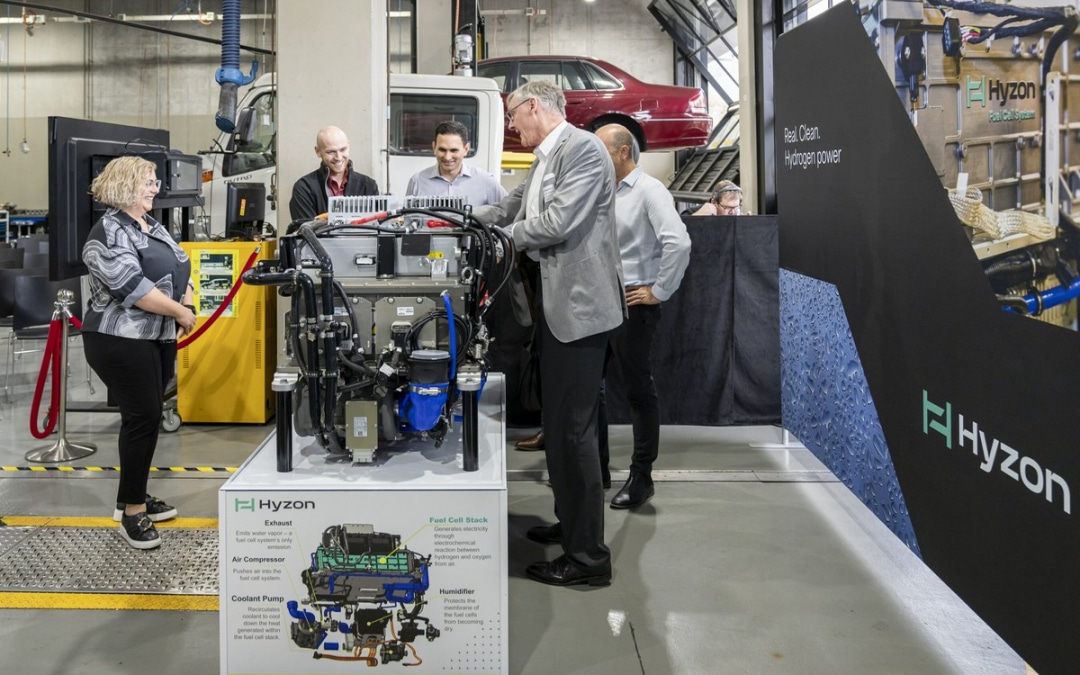
by Sven Jösting | Apr 17, 2024 | Fuel cells, international, News, Stock market, worldwide
Hyzon Motors will start production of 200‑kW modules for commercial vehicles in the USA in the second half of 2024. This should then lead to a recovery of the strongly depressed share price via incoming orders. Parallel to this are running product presentations such as the recent one in Melbourne (Australia) with the 200‑kW Hyzon Prime Mover at the Kangan Institute Automotive Centre of Excellence. Deliveries in New Zealand, Australia, Europe and the USA are planned for later in the year. This fuel cell system can be used in many other applications and markets at the same time: rail vehicles, maritime transport, stationary energy, mining vehicles, etc. It will be interesting to see which customers this 200‑kW single stack will find and the order potential that will result, especially as it offers a cost reduction potential of over 25 percent and conserves 30 percent of the space and weight – compared with a 110‑kW system. A first major market for Hyzon will be the employment in commercial vehicles in Australia, where the company has an important location with around 50 employees.
Patent registrations – Competition with Toyota and Bosch
Advertisements

Hyzon Motors has applied for a number of patents in the USA, Europe and Asia and many have already been granted. The main focus here is on reducing emissions when using fuel cells, but also on battery systems. What this means in detail is not clear to me, but shows that Hyzon is very active in securing patents and sees in it an important basis for its FC products and utilizations as well as markets. This would put them in direct competition with companies such as Toyota and Bosch. This could – purely theoretically – eventually lead to license revenue.
Hyzon still has with over 100 million USD sufficient capital, but will not be able to avoid taking measures (issue of new shares or participation of a strategic investor) to finance the company’s growth and expansion. The production facility in Illinois is self-financed. Production ramp-up is beginning in the second half of the year. Incoming orders for the FC modules as well as speculation by a strategic partner or investor make the share of Hyzon Motors a very interesting speculation, although the investment is to be classified as highly speculative as you’re dealing with a start-up.
Disclaimer
Each investor must always be aware of their own risk when investing in shares and should consider a sensible risk diversification. The FC companies and shares mentioned here are small and mid cap, i.e. they are not standard stocks and their volatility is also much higher. This report is not meant to be viewed as purchase recommendations, and the author holds no liability for your actions. All information is based on publicly available sources and, as far as assessment is concerned, represents exclusively the personal opinion of the author, who focuses on medium- and long-term valuation and not on short-term profit. The author may be in possession of the shares presented here.
Author: Sven Jösting, written March 15th, 2024
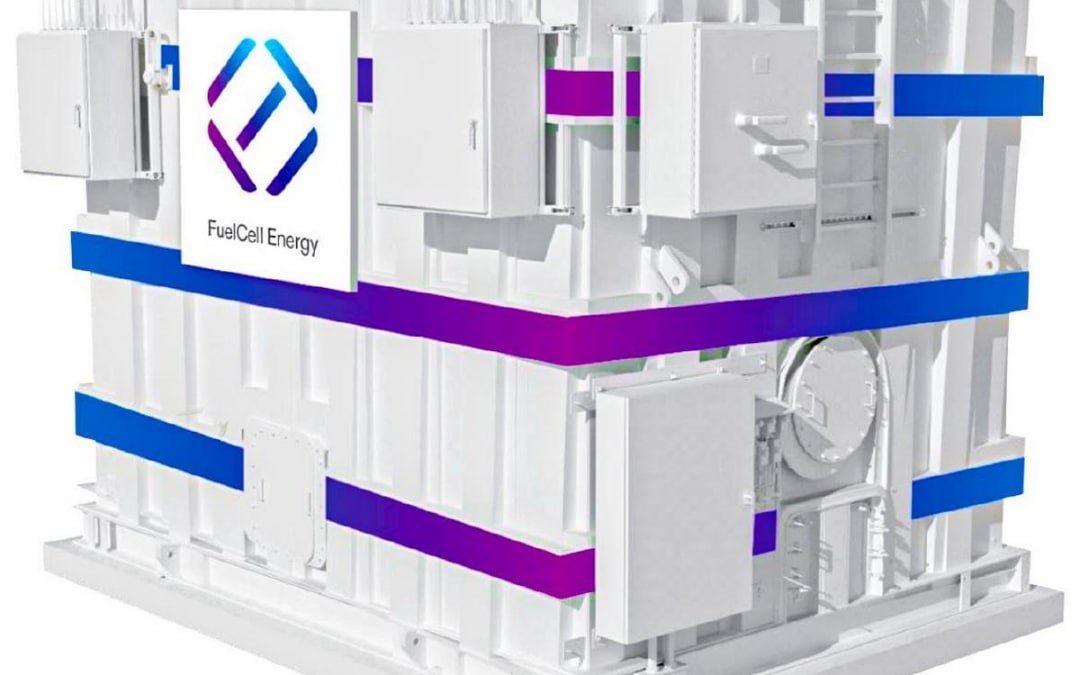
by Sven Jösting | Apr 17, 2024 | Fuel cells, hydrogen development, News, Stock market
FuelCell Energy has with SOFC fuel cell power plants built its own capacities for clean energy totaling 62.8 MW (previous year: 43.7 MW). The company’s own high-temperature fuel cell serves as the basis for use in electrolysis, where the company has recognized great potential for itself. Along with that are various research projects, among others in Canada, and the company relies on specially developed carbon capture technology that is designed to avoid emissions and generate emissions-free energy at the same time. So far, so good. But you can’t avoid thinking of competitors such as Bloom Energy, Sunfire and Ceres Power (indirectly also Weichai Power and Bosch), which pursue similar visions and technological approaches to FuelCell Energy.
What all this means in terms of order and implementation potential is unfortunately not yet clear to me. The figures so far are sobering: The first quarter (fiscal year 31.01.24) brought a loss of 44.4 million USD. Turnover fell in the quarter to 16.7 million USD. Of liquidity, the company has no lack: 348.4 million USD was in the bank January 31, 2024. However, there has been a constant outflow of capital for years, aided by constant share placements on the stock exchange via an ATM program. Projects such as that with Exxon in Holland sound promising, but say very little about the potential. In South Korea, former partner Posco, via its subsidiary Korea Fuel Cells, forfeited the option of further orders in supplement to a previous project. Not a good sign.
Advertisements

Joint venture with ExxonMobil
At first glance, it sounds promising: FuelCell Energy and ExxonMobil have agreed to build a production plant for carbon capture in Rotterdam. It entails the avoidance of CO2 emissions or the storage and making usable, without generating a carbon footprint. CCS stands for carbon capture and storage. After successful deployment directly in the neighborhood of important industries, the project that is based on the technology of FuelCell Energy could be deployed at all production sites of ExxonMobil where CO2 emissions are generated. The process is to generate heat as a by-product and enable the production of green hydrogen.
Unfortunately, there is no indication of the exact investment volume (invest on the part of FuelCell Energy) and the order volume that can be derived from this. In any case, the project is financially supported by the EU via the Emissions Trading System Innovation Fund. ExxonMobil and FuelCell Energy have already been working on the associated technologies for some time, so this specific project represents another important milestone.
The cash cushion is safeguarding the share price well. The stock exchange will rediscover FuelCell Energy when it can be shown how technologies such as carbon capture and SOEC can generate orders and earn money. That will take some time. The share is always suitable for trading, as good news quickly leads to major price swings.
Disclaimer
Each investor must always be aware of their own risk when investing in shares and should consider a sensible risk diversification. The FC companies and shares mentioned here are small and mid cap, i.e. they are not standard stocks and their volatility is also much higher. This report is not meant to be viewed as purchase recommendations, and the author holds no liability for your actions. All information is based on publicly available sources and, as far as assessment is concerned, represents exclusively the personal opinion of the author, who focuses on medium- and long-term valuation and not on short-term profit. The author may be in possession of the shares presented here.
Author: Sven Jösting, written March 15th, 2024
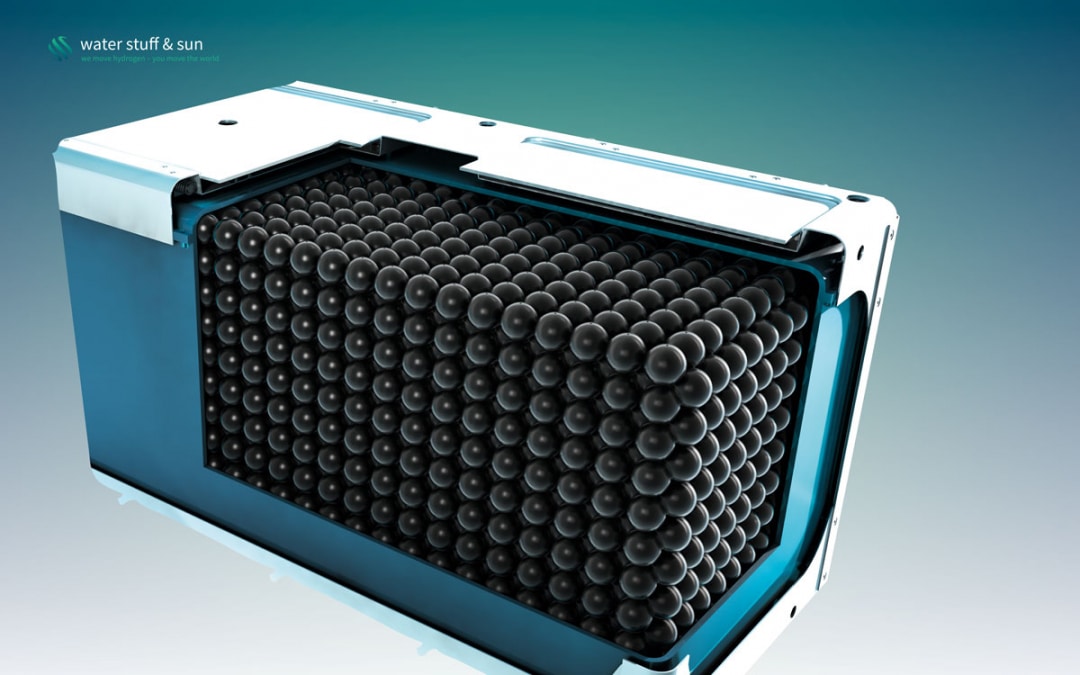
by Niels Hendrik Petersen | Mar 18, 2024 | Development, Energy storage, Europe, Germany
Interview with Thomas Korn, CEO of water stuff & sun
Startup company water stuff & sun has developed a novel technology that is designed to provide a safe and easy way to store hydrogen. The solution’s key component is its microvalve system. A pressure regulator controls the release of hydrogen progressively from 1,000 bar down to just a few bar. H2-international spoke to Thomas Korn, CEO of water stuff & sun, about how it works and the challenges encountered.
H2-international: Mr. Korn, the storage and refueling of hydrogen is a challenging issue. How do you solve that problem?
Korn: As it stands, the storage of hydrogen in conventional compressed gas tanks is complex and expensive. There is a trade-off between performance, safety and cost. We have a surprising solution to this: Instead of using a small number of large cylindrical tanks, our technology allows us to store the same amount of hydrogen in multiple spherical carbon-fiber vessels the size of a tennis ball. The silicon microvalve system, which is built into every pressurized ball, means that all the vessels act identically and in unison, just like a large tank. The expense involved in ensuring the safety of hydrogen stores can be significantly reduced if the energy is split into multiple small vessels. As a result, we save almost half the carbon fiber material compared with a standard pressurized tank. We call these ball-shaped high-pressure storage vessels Sfeers.
Advertisements

They allow hydrogen cells to be scaled as required and integrated into hydrogen batteries of any shape. Green hydrogen can thus be used in a variety of motive and stationary applications such as trucks, drones and airplanes. The next generation of these energy stores will be 95 percent lighter and up to 30 times cheaper than lithium ion batteries – while still carrying the same amount of energy.
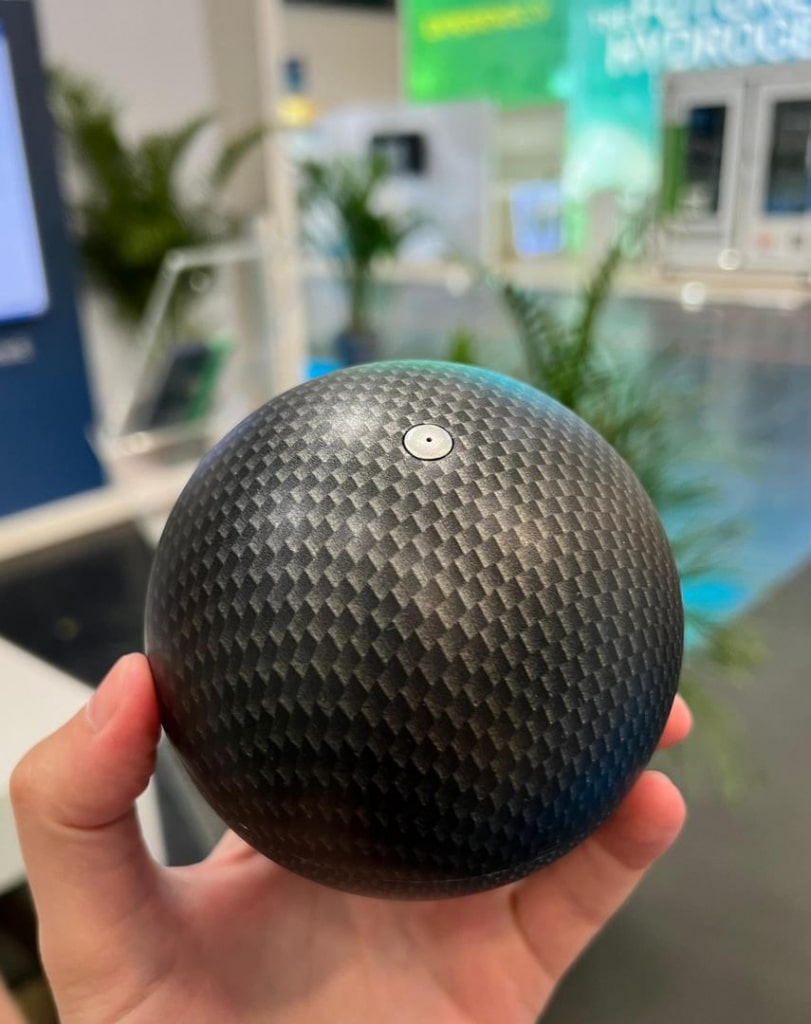
Fig. 2: Doing the rounds: a Sfeer ball at the EES trade fair in Munich
How does the hydrogen battery work?
Hydrogen batteries are low-pressure hydrogen tanks containing Sfeers which are filled at up to 1,000 bar. The hydrogen battery enclosures are designed for low pressures and can therefore be perfectly adapted to the available installation spaces in a wide array of mobility products. When hydrogen is extracted, the pressure in the hydrogen battery enclosure decreases and activates the microvalve system in all the Sfeers once the pressure drops below a mechanically programmed ambient pressure range. These then release hydrogen, together providing the energy required for a hydrogen engine or a fuel cell.
The pressure in the hydrogen battery rises again above the pressure activation level that is set during the manufacture of the micromechanical components. Once the pressure level has been reached, all the microvalves close. The pressure in the battery stays constant or reduces further if the consumer withdraws more hydrogen. The activation pressure is set to the supply pressure of the consumers. The hydrogen battery can be thought of as a low-pressure tank, but with the capacity of a high-pressure tank.
The concept increases the safety level while at the same time reducing the amount of material used. Since their highly adaptable shape means they can make best possible use of the available space, hydrogen batteries outperform conventional pressurized tanks in terms of volumetric and gravimetric power density.
Microvalve technology has its origins in satellite technology. How is this technology produced?
Satellites have a gas propulsion system that secures their position within the communication window. Even in the early days, industrial developers started to use microsystem technology to regulate gases due to financial pressure to make ever smaller and lighter satellites. Our innovation centers on the development of micromechanical switching elements that don’t need electrical energy for their control; instead they are controlled passively by the ambient pressure. As in semiconductor engineering, highly industrialized manufacturing processes are used that can create thousands of identical parts on large silicon wafers. Valves, gas channels and the five-stage pressure regulator are produced and joined in four silicon layers. All chip components are built into a space measuring 4 x 4 x 2.5 millimeters (0.16 x 0.16 x 0.1 inches).
How did you come up with the idea of spherical high-pressure vessels?
The technology was invented by Prof. Lars Stenmark, who taught microsystem engineering in the Ångström Laboratory at Uppsala University and who had already applied earlier inventions to the aerospace industry. When he told me about his hydrogen storage invention, I was all for it. A physical hydrogen storage vessel that combines two existing technologies and resolves the trade-off between safety, cost and performance in hydrogen tanks – we couldn’t resist and founded the company water stuff & sun in January 2017.
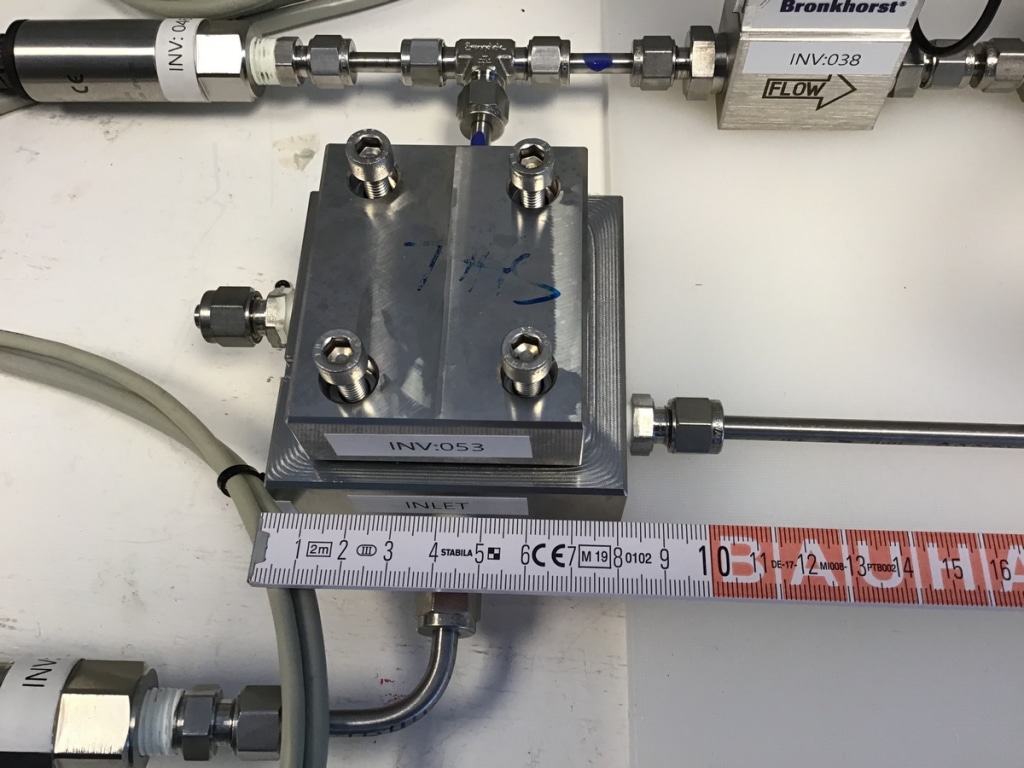
Fig. 3: A view of the lab shows the test setup for microchip evaluation
Is there already a prototype?
We have already produced and tested prototypes of switching valves and the key element of the valve system – the pressure regulator – in the clean room of the Ångström lab in Uppsala. We have also put a carbon fiber Sfeer prototype through a burst test and validated our simulation model with the results. At the moment we are building the first system prototype of a hydrogen battery with three Sfeer cells. The prototype and its use in a micromobility application will reach technology readiness level 5 in the first half of 2024. At that point we’ll start to develop hydrogen batteries for specific mobility products with several manufacturers and go on to industrialize them in the next stage. There is a great deal of interest from industry. For example, we have already submitted a joint funding project with an aircraft manufacturer and the German Aerospace Center. We are working with our partner Keyou to develop hydrogen batteries for converting and retrofitting trucks and buses. Additionally, we’ve managed to stimulate interest from a mining machinery manufacturer and a truck OEM.
Returning to the refueling process: Am I right that you are intending to swap the tanks?
Hydrogen batteries don’t need to be refueled in the vehicle; they are exchanged at swap stations or, in the case of small applications, they can also be exchanged by hand. That way, refueling can take place quickly and cost-effectively. The empty hydrogen batteries are refilled at central compressor stations and returned to the swap stations. The low operating pressure and the limited quantity of H2 in the hydrogen battery enclosure makes this ease of handling possible. In comparison with conventional high-pressure or liquid hydrogen refueling stations, the expense and complexity are significantly reduced, which in turn lowers the capital and operating costs and thereby also the hydrogen price. For heavy-duty vehicles, for instance, with hydrogen, several hundred liters of fuel energy equivalent need to be compressed, cooled and transferred. By simply swapping the hydrogen battery, the process can be completed in just a few minutes.
The financing required will be considerable. What are the next steps for your company?
The need for capital in a tech startup is always an issue – it’s a continuous process. We have just started a new financing round in which our existing investment partners, such as the investment arm of Kreissparkasse Esslingen-Nürtingen, or ES Kapital for short, the company Besto, run by the entrepreneurial Beyer and Stoll families, and machinery and tooling factory Nagel, have already registered an interest. I would refer to them as relatively down-to-earth, regional investors that have been involved from an early stage. The plan is to invest the new cash in the development of a prototype in the motive application area, as mentioned earlier, among other things. The raw materials for the production of semiconductor chips are all affordable. Carbon fiber and silicon are readily available on the market. That is an advantage in terms of further scaling. If everything goes according to plan, we will see the first of our batteries in a vehicle or aircraft by 2025.
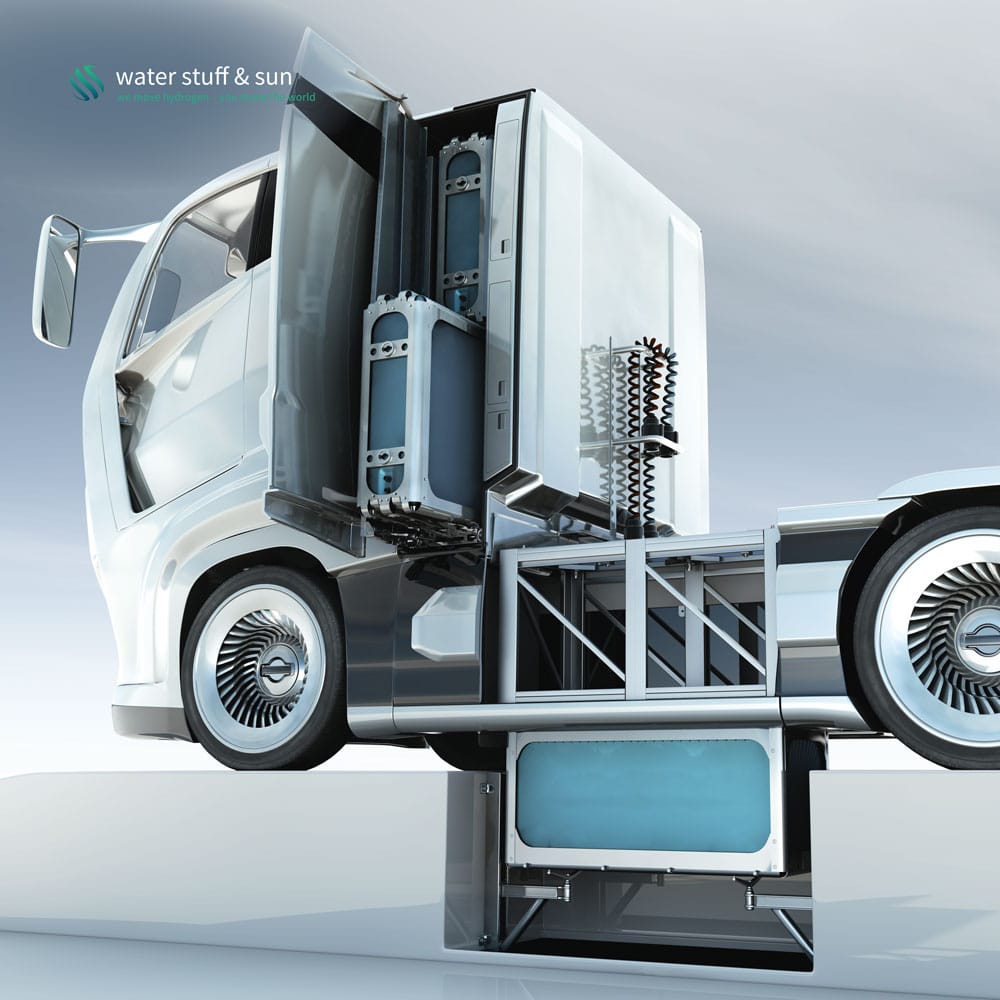
Fig. 4: The H2 battery should be quick and easy to swap in and out of a truck
When and how will the market for your solution evolve?
The transformation of energy systems is well under way. Infrastructure for natural gas- and oil-based fuels is being replaced by hydrogen and liquid hydrogen derivatives such as ammonia, methanol or synthetic fuels. The competition for technology leadership and, ultimately, energy leadership began long ago. In China and the USA, many billions of euros are now being invested in hydrogen technologies and their infrastructure; we Europeans are attempting to counter this with the Green Deal. Hydrogen projects are sprouting up all over the place. As far as we are concerned, the market has already started; we’re currently concluding cooperation agreements with initial vehicle and machinery manufacturers.
Where will the first market be that manages to develop?
We need to take a multitrack approach and are therefore also looking at the USA and the Arab world. The country that achieves the lowest hydrogen prices by investing will attract a lot of companies and investment. In the EU and Germany I hope that the greenhouse gas quota gives us an instrument that is competitive.
You won a prize at the World CleanTech StartUPs Awards, otherwise known as WCSA 2023. What particularly impressed the judges?
Firstly, the award as a platform is a very interesting network in itself. Applications for WCSA 2023 were invited by ACWA Power in strategic partnership with Dii Desert Energy and the French institute for solar energy CEA-INES, among others. The judging panel recognized the transformative potential of the hydrogen battery. The innovation could create an efficient and flexible infrastructure for H2. The electricity costs for hydrogen production from renewables are very low in Dubai. That’s why ACWA invited us again at the end of 2023 to present our solution locally. That will be extremely exciting.
In November we received two awards at the Global EnergyTech Awards: the prize for the Best CleanTech Solution for Energy and a special prize for Best Stand Out Performer. We were the only winners from Germany. That helps.
Interviewer: Niels Hendrik Petersen
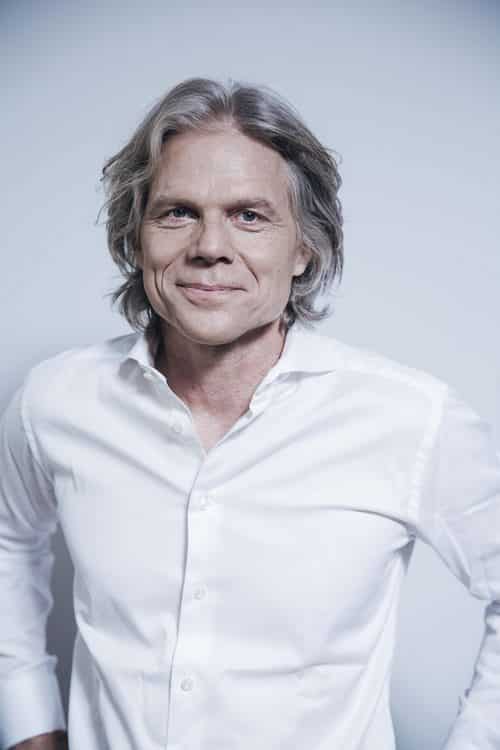
Fig. 5: Thomas Korn
Thomas Korn has been working in the hydrogen field since 1998. The engineer’s experience includes work at BMW on fuel cell development. In 2015, he co-founded the hydrogen startup Keyou in Munich. The startup water stuff & sun was launched in 2017 in Unterschleißheim, Bavaria. The fledgling company now has 15 members of staff and a branch in Uppsala, Sweden.











